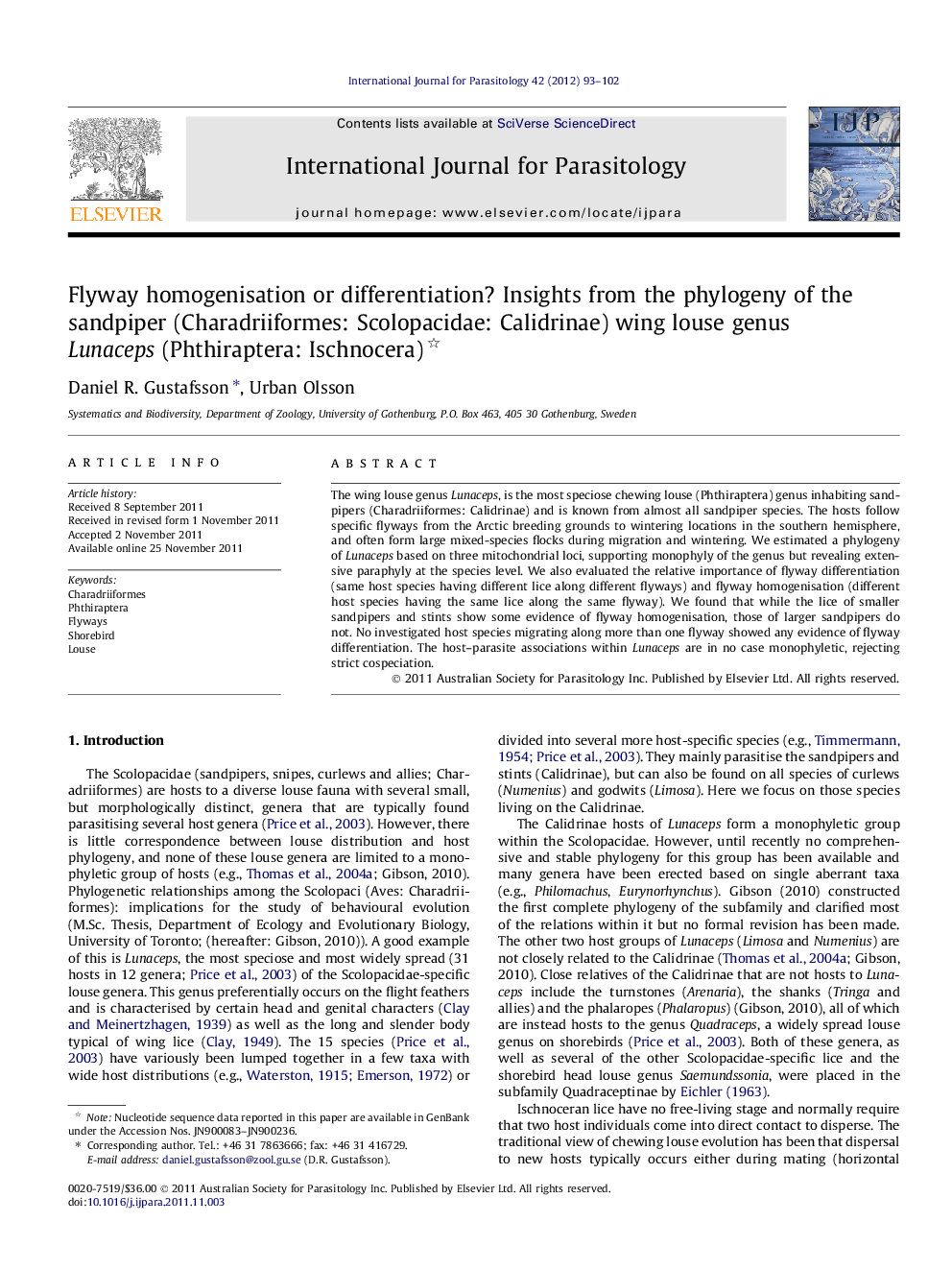| Article ID | Journal | Published Year | Pages | File Type |
|---|---|---|---|---|
| 2436134 | International Journal for Parasitology | 2012 | 10 Pages |
The wing louse genus Lunaceps, is the most speciose chewing louse (Phthiraptera) genus inhabiting sandpipers (Charadriiformes: Calidrinae) and is known from almost all sandpiper species. The hosts follow specific flyways from the Arctic breeding grounds to wintering locations in the southern hemisphere, and often form large mixed-species flocks during migration and wintering. We estimated a phylogeny of Lunaceps based on three mitochondrial loci, supporting monophyly of the genus but revealing extensive paraphyly at the species level. We also evaluated the relative importance of flyway differentiation (same host species having different lice along different flyways) and flyway homogenisation (different host species having the same lice along the same flyway). We found that while the lice of smaller sandpipers and stints show some evidence of flyway homogenisation, those of larger sandpipers do not. No investigated host species migrating along more than one flyway showed any evidence of flyway differentiation. The host–parasite associations within Lunaceps are in no case monophyletic, rejecting strict cospeciation.
Graphical abstractFigure optionsDownload full-size imageDownload high-quality image (36 K)Download as PowerPoint slideHighlights► A phylogeny of the genus Lunaceps is estimated based on three mitochondrial genes. ► The roles of two proposed evolutionary mechanisms based on flyways are investigated. ► No evidence was found for flyway differentiation. ► Evidence for flyway homogenisation was found in some, but not all, taxa.
